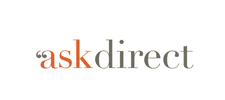Supporter surveys: what do your supporters really think?, part 3
Here in part three Jonathon points out some key issues to consider as you develop your supporter survey.
- Written by
- Jonathon Grapsas
- Added
- July 12, 2012
Part 3: considerations

Right, so you’ve convinced yourself and others that a survey sounds like a worthwhile exercise. And you’ve mapped out how you’re going to execute it.
Before you actually get your survey in the post, make sure you spend time working through the following considerations.
Consideration 1: whom are you going to mail?
Treat this for all intents and purposes like an appeal mailing. Use a recency, frequency and value (RFV) model to dictate your selections. But don’t get bogged down in this, an easy cheat is to include anyone who has previously given more than one cash gift, over USD 20 in value within the last two years (recency = 1-36 months, frequency = 1 + gifts, value = $20 or more).
However, I’ve seen a lot of success going back even further. In fact, some clients have mailed surveys to donors who haven’t made a financial contribution for five or six years, and have been able to reactivate enough of them to make it worthwhile.
Most of my focus in this article has been on sending surveys to existing donors (your warm/house lists). However a survey can (and you should test this) be a really effective way to recruit new donors. If you can get this working then not only have you developed a new and successful way to secure new donors, but immediately you have captured some really powerful information about them.
Consideration 2: capturing and storing data
I’d suggest there are three levels of data within a survey that you should capture.
Firstly, there are the pieces of information (data) you absolutely need to be able to store on your main database, regardless of the platform you use.
- It is extremely important to know the age of your donors. Older donors make better legacy prospects. However, always ask for their date of birth, rather than how old they are. Most people are used to seeing a date of birth line on a survey form and will give it without much thought. However, if they are asked their age, they’re likely to tell you to mind your own business.
- You need to know whether donors have included your charity in their will, or whether it’s something they are considering for the future.
- Personal experiences relating to your cause. For instance, the donor to a cancer charity may respond to that charity’s survey explaining that she has lost a loved one to cancer. This is the sensitive information that donors will expect (and rightly so) that once they have given it you will have it at your fingertips when they speak to you.
Secondly, there is the data that you would ideally love to have readily available, but isn’t as essential as the category above. For example, when someone tells you he was motivated to support you because he visited one of your projects; or that he is really interested in your sanitation project in Zambia. Again really useful and important data that you should make every effort to store and have easily available.
As a side note, if you can’t capture all of the information from the survey on your main-frame database, you can capture this elsewhere (even in an Excel file) where it can still be referenced and used later on. Don’t delay doing a survey because your database can’t capture every single piece of information.
Thirdly, there is the data from the ‘filler’ questions I talked about. For instance, someone tells you she supports charity X and Y as well as you, or that she has annual income over a certain level, or holds a university degree. Some of this profiling information may be useful in terms of developing a donor blueprint for acquisition purposes, but doesn’t need to be held on your main database.
Consideration 3:
Fundamentally I don’t think any organisation should try to process the surveys in-house (unless you are expecting less than a couple of hundred surveys to be returned; or you already have a processing team that can handle large volumes and complicated processing).
Outsource the processing to a data processing house/bureau to enter the responses to the questions. Done properly, 10-30 per cent of the donors you mail should return a completed survey. This means that, depending on the size of your file, you could be talking about thousands of surveys (with up to 20 questions per survey) to process. It isn’t worth the hassle of doing it yourself: outsource it.
However, when you first receive the surveys, there will be some element of sifting through to process the donations (about 50 per cent of responders will send a donation with the survey as long as you have asked them for one). You’ll also need to separate those surveys that show that the donor is interested in leaving a legacy, wants to become a regular (monthly) donor, or if the donor has made comments that you should follow up. You’ll need to action each of these appropriately, as I will discuss below, before they get collated and sent off to a third party for data entry.
Once the surveys are entered, the relevant information can be uploaded into your main-frame database. Any extra information that can’t be held in your main database can be storied in a corresponding spreadsheet or similar file, so that you can use it when you need it.
Consideration 4: getting the follow up right
You will be asking donors a range of questions and possibly asking them to indicate interest in varying areas, such as attending events, bequests/legacies, even whether they would like to donate their most precious commodity, their time.
For those of you who love flow charts (and I do know some flow chart addicts!), you will love surveys. You need to bring your entire fundraising/development team together (including supporter services) to work out how you will deal with those responses that require action from you. For example, what will happen when a donor returns a survey with a donation, indicates her intention to leave a bequest and wants to volunteer at your annual bike ride? In contrast, what will happen when a donor returns the survey without a donation, indicates he is interested in giving a monthly gift and shares with you (in the comments section) his personal story of living with cancer?
These are two very different outcomes requiring very different responses. The bottom line is that you need to think through all of the eventualities and assign key responsibilities at every stage.
Don’t underestimate the importance of this step, for if you get it wrong it can be incredibly destructive. And I assure you, no matter how successful the survey is in terms of the number of responses you receive, the donations you receive, or the number of donors who tell you they are leaving a bequest, if this process causes friction and turmoil in your team, or in the wider organisation, it will leave an indelible mark that may result in the survey being cancelled next year.
Consideration 5: using the data (personalisation)
This is the fun part: where you can take supporter relationship management to the next level.
I’ve talked about the type of questions you should consider asking (reasons for support, areas of interest, real motivation, satisfaction levels), but before you execute the survey think about how you are going to use the information you collect.
There are obvious ways to use it, like this...
‘Jonathon, you told me recently that you have seen for yourself the devastation of the Amazon, which is why you were motivated to support us. That is why I know you will be shocked when I tell you...’
But I’d encourage you to think how you can use the information regardless of the topic you are talking to donors about. Let’s say for example the appeal is focused on the Amazon, which the donor hadn’t shown any interest in, why not write something like this...
‘Jonathon, when I wrote to you earlier this year you told me that you were really interested in the work we were doing in the Amazon which as you know is incredibly important. Right now however I am determined to intensify our efforts on the effects of dangerous climate change…’
See what I’ve done here? I’ve still used the data to make a personal connection, but even more cleverly.
I hope this article will have given you a basic blueprint for how to convince yourself and others why surveys can be one of the most successful fundraising tools at your disposal. I also hope you have enough information to put one together for your own organisation.

















